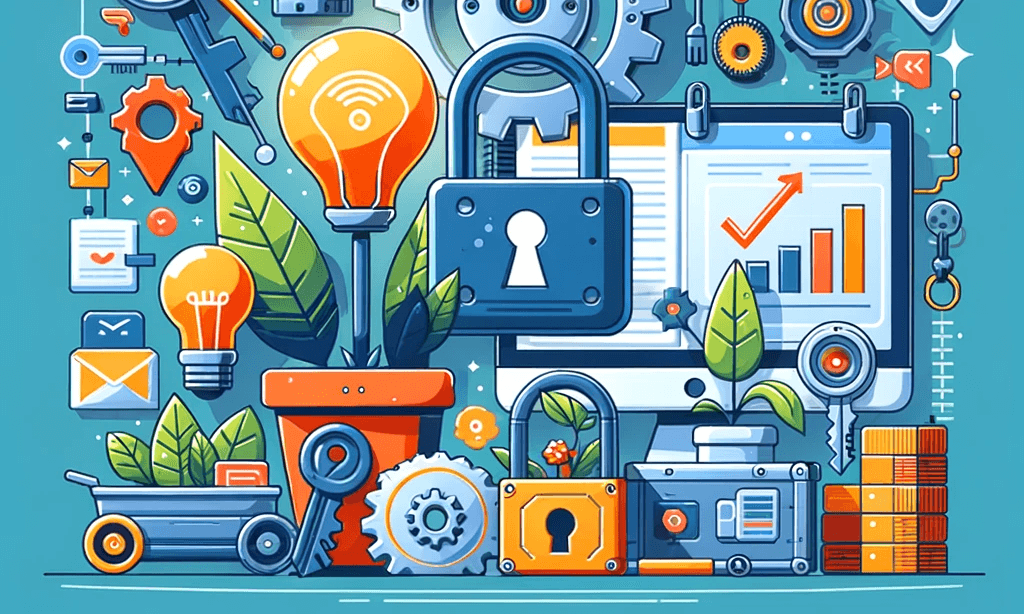
In the digital era, automation tools have become indispensable for enhancing efficiency and productivity in various sectors. However, as the reliance on these tools grows, so does the concern for security. In this article, we delve into the security aspects of digital automation tools, understanding their vulnerabilities, and how to safeguard against potential risks.
Table of Contents
Understanding the Vulnerabilities of Digital Automation Tools
Digital automation tools are vital in streamlining operations, but they come with inherent vulnerabilities that pose security risks. The first step in mitigating these risks is understanding their nature:
- Software Flaws: Automation tools, like any software, can have vulnerabilities in their code, which hackers can exploit. These flaws might arise from programming errors or outdated components.
- Integration Issues: Often, automation tools need to integrate with other systems. If these systems are insecure, they can become gateways for attackers.
- User Authentication Weaknesses: Weak passwords and inadequate authentication processes can lead to unauthorized access. Tools without multi-factor authentication are particularly vulnerable.
- Data Exposure: Automation tools frequently handle sensitive data. Inadequate encryption or data protection measures can lead to data leaks.
- Network Vulnerabilities: As these tools are often cloud-based, they rely on network connections, which can be intercepted or compromised.
- Lack of Regular Updates: Failing to update automation software regularly can leave known vulnerabilities unpatched, increasing the risk of attacks.
- Insider Threats: Sometimes, the risk comes from within an organization. Employees with access to automation tools might misuse them, intentionally or unintentionally causing security breaches.
By identifying these vulnerabilities, organizations can take specific steps to strengthen their defenses, ensuring that their reliance on digital automation tools doesn’t become a liability.

The Impact of Security Breaches
Security breaches in digital automation tools can have far-reaching and severe impacts:
- Loss of Sensitive Data: Breaches often result in the loss of confidential information, including customer data, financial records, and proprietary business information.
- Financial Losses: The costs associated with a security breach can be substantial, including fines for non-compliance, costs of forensic analysis, and compensations for affected parties.
- Reputational Damage: A breach can severely damage an organization’s reputation, leading to lost trust among customers and partners, potentially resulting in a loss of business.
- Operational Disruption: Security incidents can disrupt the functionality of automation tools, leading to operational delays and inefficiencies.
- Legal and Compliance Issues: Organizations may face legal actions and penalties for failing to protect data adequately, especially when regulatory requirements are not met.
- Intellectual Property Theft: Breaches can result in the theft of intellectual property, giving competitors an unfair advantage.
- Psychological Impact on Employees: Security breaches can cause stress and anxiety among employees, affecting morale and productivity.
Understanding these impacts highlights the critical need for robust security measures to protect digital automation tools and the data they manage.

Implementing Robust Security Measures for Digital Automation Tools
To safeguard digital automation tools, implementing robust security measures is essential. Here’s how it can be achieved:
- Regular Software Updates: Keeping automation tools updated ensures that security vulnerabilities are patched promptly.
- Strong Authentication Processes: Implementing multi-factor authentication and strong password policies can significantly reduce unauthorized access risks.
- Data Encryption: Encrypting sensitive data, both in transit and at rest, is crucial to prevent data breaches.
- Network Security: Utilizing VPNs, firewalls, and secure Wi-Fi networks helps protect the data flow to and from automation tools.
- Access Control: Limiting user access to essential functions based on roles can minimize the risk of internal threats.
- Employee Training: Regular training sessions for employees on security best practices and phishing awareness can significantly reduce the risk of breaches.
- Regular Security Audits: Conducting periodic security audits helps identify and rectify vulnerabilities in the system.
- Incident Response Plan: Having a well-defined incident response plan ensures quick action in the event of a security breach.
- Vendor Assessment: If using third-party automation tools, conducting thorough security assessments of the vendors is vital.
These steps, collectively, create a fortified environment around digital automation tools, significantly reducing the risk of security breaches.

Compliance and Regulatory Standards
Adhering to compliance and regulatory standards is crucial in mitigating security risks:
- Understanding Industry Regulations: Different industries have specific regulations, such as HIPAA for healthcare or GDPR for data protection in the EU. Automation tools must comply with these standards.
- Data Privacy Laws: Ensuring that automation tools adhere to data privacy laws is essential to protect user information and avoid legal repercussions.
- Regular Compliance Audits: Conducting regular audits ensures ongoing adherence to relevant regulations.
- Documentation and Reporting: Maintaining detailed records of compliance efforts is necessary for regulatory reviews.
- Vendor Compliance: If automation tools are sourced from vendors, their compliance with industry standards must be verified.
- Employee Training: Employees should be trained on compliance requirements related to the use of automation tools.
Focusing on these aspects ensures that digital automation tools not only enhance operational efficiency but also align with legal and ethical standards.
The Role of Encryption and Firewalls
- Encryption: It plays a crucial role in protecting data integrity and confidentiality.
- Data at Rest: Encrypting stored data prevents unauthorized access.
- Data in Transit: Encryption protocols like SSL/TLS safeguard data being transferred over networks.
- Firewalls: Act as a barrier against unauthorized access.
- Network Level Protection: Firewalls monitor and control incoming and outgoing network traffic based on predetermined security rules.
- Application-Level Firewalls: Specifically designed to inspect and filter traffic coming to and from an application or service.
Together, encryption and firewalls provide a robust defense, ensuring that data within digital automation tools remains secure from unauthorized access and breaches.
Monitoring and Regular Audits for Digital Automation Tools
- Continuous Monitoring: Implementing real-time monitoring systems to detect unusual activities or security breaches in automation tools.
- Regular Audits: Periodic audits help assess the effectiveness of current security measures and identify potential vulnerabilities.
- Audit Trails and Logs: Keeping detailed logs for all activities within the automation tools for accountability and traceability.
- Compliance Checks: Ensuring that the tools remain compliant with relevant industry regulations through regular reviews.
- Third-Party Audits: Sometimes involving external experts for unbiased assessment of security protocols can provide deeper insights.
- Update and Improvement: Post-audit, it’s crucial to update security measures and fix identified vulnerabilities promptly.
Regular monitoring and audits are vital in maintaining the security integrity of digital automation tools, ensuring they remain robust against evolving cyber threats.

The Future of Automation Tool Security
- Artificial Intelligence and Machine Learning: AI and ML are set to play a significant role in predictive threat detection and automated response to security incidents.
- Blockchain for Enhanced Security: The use of blockchain technology could offer decentralized security solutions, making automation tools more resilient to attacks.
- Advanced Encryption Techniques: The development of more sophisticated encryption methods will further secure data within automation tools.
- IoT and Edge Computing Security: As automation expands to IoT and edge devices, specialized security protocols will become necessary.
- Increased Regulatory Focus: Expect stricter regulations around digital automation for enhanced data protection.
The future of automation tool security lies in embracing emerging technologies and adapting to evolving threats and regulations.
Conclusion
The security of digital automation tools is a critical concern that requires ongoing attention and adaptation. By understanding the risks, implementing strong security measures, and staying informed about evolving technologies, organizations can safeguard their digital assets and maintain trust in their automation processes.


